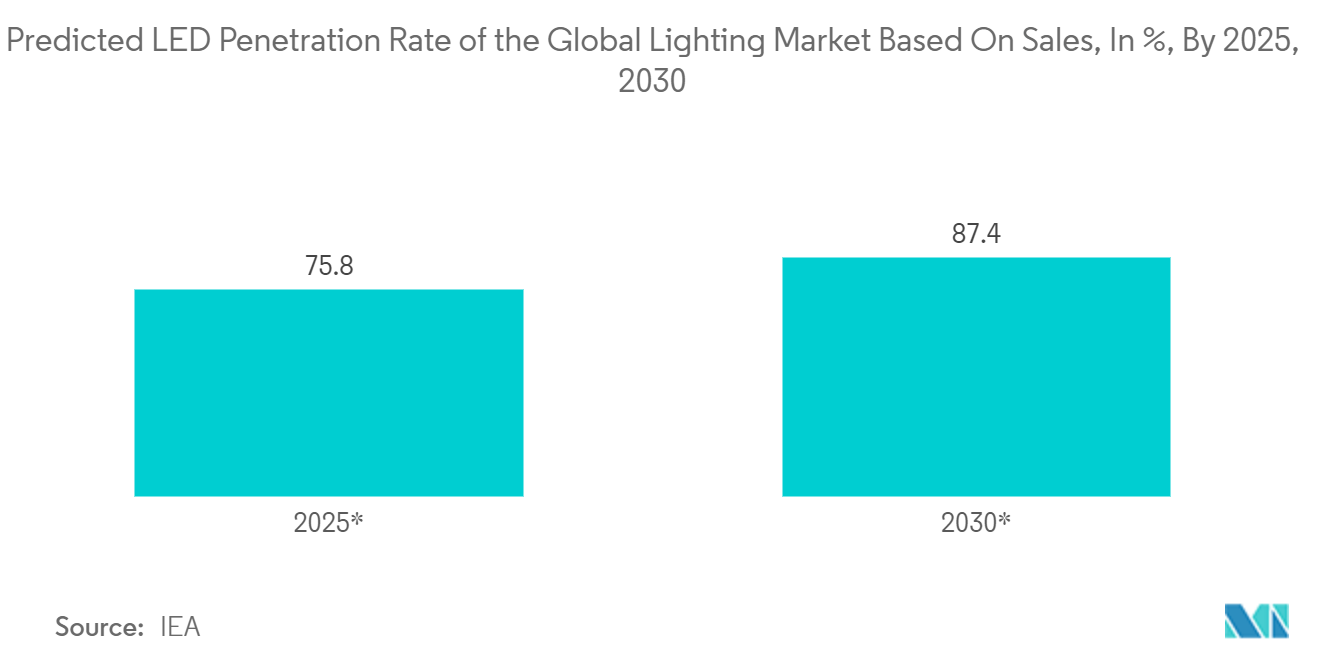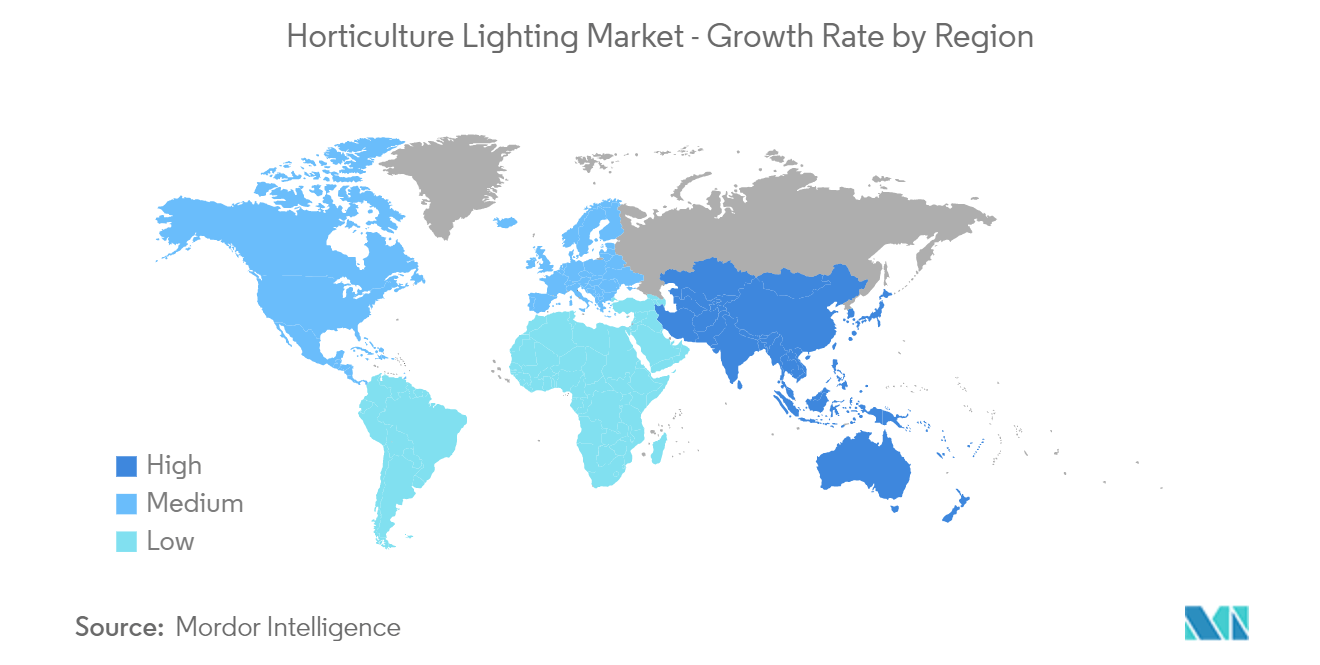Market Trends of Horticulture Lighting Industry
LEDs are Expected to Hold a Significant Market Share
- LED technology is gaining popularity in the horticultural sector, mainly due to NASA, which continues to conduct plant-growth experiments under LED lighting. It shows immense potential as a horticultural lighting fixture because of low energy consumption, better operation, and the capability to customize the spectral output to emit the specific wavelengths usable by plants.
- These lights are also more cost-efficient than other artificial light sources. LEDs do not burn out like traditional light bulbs but experience minimum lumen depreciation over time. Light bulbs are liable to fail on average after one year, but they can operate LEDs for more than 50,000 hours (depending on the type of application). The increased lifetime ensures high reliability.
- LEDs can emit light efficiently, producing much less heat than other lighting fixtures. In most indoor farming, heat is considered waste and is removed by an air conditioner or fan. Still, LEDs can reduce the energy consumption associated with removing excess heat by not producing it in the first place.
- Increasing awareness of benefits and rising demand for food owing to the rising population is expected to drive the adoption of vertical farms in the region. Researchers in the Netherlands are calculating the viability of vertical farming in urban areas. For instance, in April 2022, ams-OSRAM was also planning additional investment in a significant new 8in LED front-end capacity in Malaysia (at the Kulim Hi-Tech Park) to support advanced LED technologies and microLED manufacturing totaling EUR 800 million. Furthermore, ams Osram is also planning to be carbon neutral by 2030.
- For instance, in April 2022, Samsung introduced 'Plant-Centric Spectrum LEDs, LM301H EVO' for the Most Effective Indoor Farming. Using its spectrum engineering technology, Samsung has developed a trustworthy horticultural light source with a 437 nm spectral peak that delivers industry-leading PPE to improve plant growth and enhance crop quality. Samsung's innovative plant-centric spectrum LED dramatically boosts photosynthesis over existing horticulture lighting solutions, resulting in better, more holistic plant growth.
- IR LEDs with sensing functions can be applied for people flow monitoring in public areas, helping individuals to keep social distance when lockdowns are lifted. The COVID-19 pandemic has inspired a new application for IR sensing: social distance control. IR sensing technology enables anonymous and accurate tracking. It analyzes the flow of people, supporting malls, public buildings, banks, airports, and other venues visited by large amounts of people to monitor people flow and maintain safe social distance between individuals.

Europe to Witness Significant Growth
- Europe accounted for a significant share of the horticulture lighting market and continues to grow with other European countries, promoting plant factories and providing subsidies to spur local demands. The European Union's initiatives to encourage the adoption of LED technology are expected to create more opportunities for the providers of LED lights for the horticulture sector.
- LEDs are now massively produced in many markets, and competition among manufacturers is driving further innovation, wider product choices, and lower prices. LED lighting for horticulture is a fast-growing market. In Europe, innovation in horticulture LED lighting is turning the local farm-to-fork future of agriculture on its head. The recipe for delicious food begins well before the kitchen. Farmers now dial up climate recipes using innovations in LED lighting to deliver fresher, more nutritious fruits and vegetables to consumers.
- LED lighting providers in the region are also developing a full range of horticultural products and are broadening collaboration with different partners. For instance, in march 2022, GE Current added a new category to its broad Arize range of horticultural LED solutions with the launch of the Arize Integral intra-canopy lighting (ICL) fixture. Offering best-in-class lighting output of up to 346 µmol/s and efficiency of 3.5 µmol/J, the Integral is designed to help growers maximize yields of high-wire crops such as tomatoes, cucumber, and peppers through the more strategic deployment of light deep within the plant canopy.
- The benefits of LED horticultural lighting are enablers for the growth in increasing plant production, driven by population growth, limited availability of agricultural land, and growing unreliability of weather conditions. Other factors are the demand for higher-quality products, European government subsidies, and the legalization of cannabis for medicinal and recreational use.



